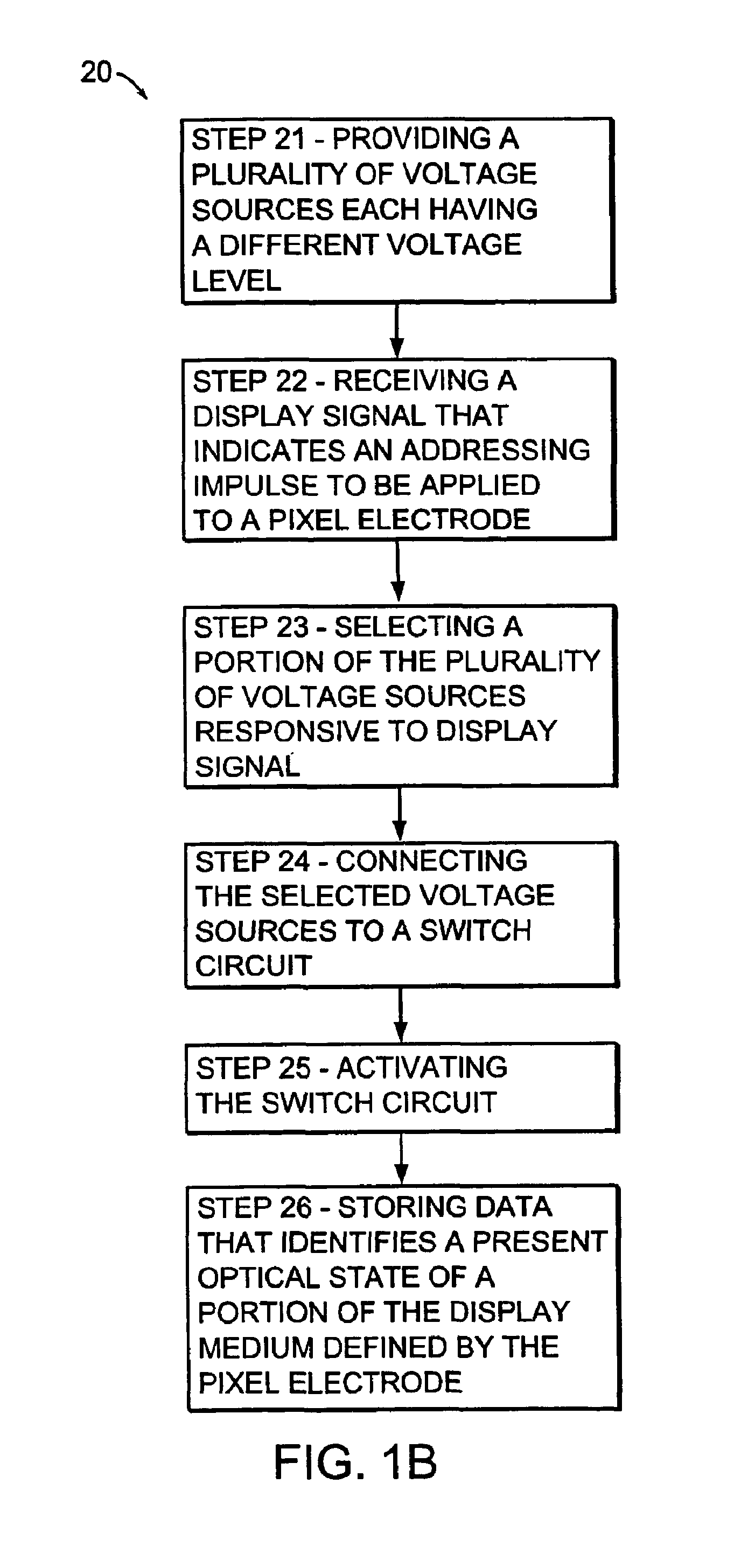Voltage modulated driver circuits for electro-optic displays
a driver circuit and electro-optic technology, applied in the field of electro-optic displays, can solve the problems of inadequate service life of these displays, unable to meet the needs of users, and gas-based electrophoretic media are susceptible to the same types of problems, so as to achieve faster design time, reduce complexity, and reduce the cost of implementation
- Summary
- Abstract
- Description
- Claims
- Application Information
AI Technical Summary
Benefits of technology
Problems solved by technology
Method used
Image
Examples
Embodiment Construction
[0074]As discussed above, this invention has three principal aspects, and these three principal aspects will primarily be described separately below. However, it should be understood that a single display may make use of more than one aspect of the present invention. For example, a display having an addressing architecture in accordance with the first aspect of the present invention may be used to carry out a drive method in accordance with the second or third aspect of the present invention.
[0075]Part A: Addressing Architecture
[0076]FIG. 1a is a schematic diagram of an embodiment of an addressing structure 10 of a display, according to principles of the invention. The display includes one or pairs of switch circuits 22 and pixel electrodes 23, which may be arranged in one or more columns and one or more rows. The addressing structure 10 includes a switch unit 12 that responds to a display signal, and one or more voltage sources 14 that are each associated with a voltage level V1, V...
PUM
 Login to View More
Login to View More Abstract
Description
Claims
Application Information
 Login to View More
Login to View More - R&D
- Intellectual Property
- Life Sciences
- Materials
- Tech Scout
- Unparalleled Data Quality
- Higher Quality Content
- 60% Fewer Hallucinations
Browse by: Latest US Patents, China's latest patents, Technical Efficacy Thesaurus, Application Domain, Technology Topic, Popular Technical Reports.
© 2025 PatSnap. All rights reserved.Legal|Privacy policy|Modern Slavery Act Transparency Statement|Sitemap|About US| Contact US: help@patsnap.com



